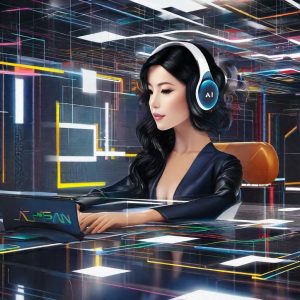
Our country is famous for many famous poets, musicians, songwriters and performers.
However, not everyone who writes poetry can create a beautiful melody for it and vice versa.
This is where another fantastic neural network comes in, which was launched not so long ago.
It is SUNO.
This neural network is easy to use, capable of generating full-fledged songs that last from two minutes and in almost all genres that exist today, and supports many languages, including Ukrainian.
Suno became a widely available tool on December 20 following the launch of the web application and a partnership with Microsoft, which included the neural network as a Microsoft Copilot plug-in. History of Suno AI creation. The neural network was founded by Michael Schulman, Georg Kutsko, Martin Camacho, and Kian Freiberg.
For a long time, before founding their own company, they worked at Kensho, a startup specializing in artificial intelligence.
After the developers began to run their own projects and work for themselves, in April 2023, an open source model for converting written speech into speech and audio was released.
This model was named “Bark” on GitHub’s Hugging Face and licensed by Mit.
On March 21, 2024, Suno released version v3, which allows all users to create a limited number of songs, 2 minutes or more in length, using a free account.
In addition, the developers offer everyone to subscribe for a month for a relatively small amount of money to unlock other features of the neural network.
On July 1, the Suno mobile application was presented to the public. Features of Suno AI.
- generate songs using user prompts;
- support for a large number of languages;
- use of poems and other texts written by the user;
- Explore mode for exploring the musical works of community members;
- built-in music player for listening to tracks;
- automatic cover generation.
How to create instrumental music and songs with Suno AI?
- You need to open the neural network page and register to get access to the tools.
- On the main page, you can see the work of community members and read the promos they used for their tracks.
- To get started, you need to go to the Create section.
- The first option: you can trust the AI to do all the work for you – you just need to write a few sentences about your future song in the Song Description field.
If you click on the Instrumental icon here, your song will contain only music, but no lyrics. - The second option is to click on the Custom Mode icon.
After that, in the Lyrics window, you need to insert your own verses that you want to set to music or a ready-made song lyric divided into verses, chorus, etc.
However, the neural network can generate lyrics for you based on your beginning or description. - When you’ve figured out the lyrics for your future hit, you need to select and write down the music style and vocals that best suit the lyrics in the “Style of Music” field.
- When all the fields are filled in, click the Create button at the bottom.
If you use the free plan, you are given 50 credits per day that you can use to create songs.
In total, you can make 10 tracks per day, two at a time.
However, you have to remember that creating audio and music is much more difficult than creating lyrics.
Last year, there was even a conversation between neural network developers and musicians from the famous Rolling Stone band.
During this conversation, music experts stated that it would take years to finalize Suno AI. Can I use the created tracks in social networks? If you are using the free version of Suno AI, you should include the attribution “made with Suno” when publishing tracks generated by the neural network on social networks such as X, Instagram, and TikTok. Will there be any copyright issues? Suno developers do not reveal the secrets of what kind of data they use to train their model.
They claim that they use not only music but also human speech recordings.
The company says that it actively interacts with large and well-known labels, so it expresses respect for all songwriters and composers, recognizing their ownership of their products.
Accordingly, the developers have made it so that when a user describes the style and voice of his or her song, he or she cannot prescribe a specific style of a particular artist, nor use his or her voice.
In addition, the neural network does not allow downloading external music samples or copying existing lyrics.
Suno V3: Opening up new possibilities
On March 21 this year, the third version of Suno was premiered.
During this event, it was noted that the new neural network model can create radio-quality music lasting two minutes or more.
When modernizing Suno, the developers took into account the wishes of users, so they improved the quality of music, expanded the range of styles and genres, and increased the level of correspondence to descriptions.
Thus, the emergence of the Suno AI platform marks a key and pivotal moment in the music industry, as it turns lyrics into melodies and now every user can try themselves as a music content creator.

